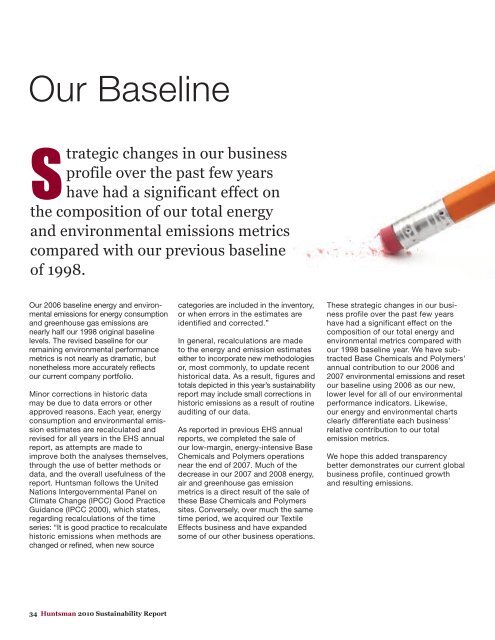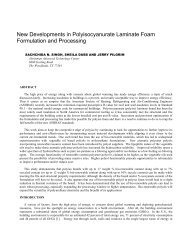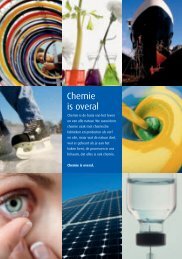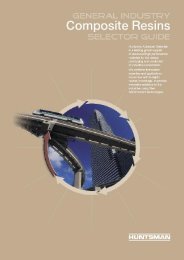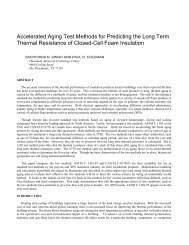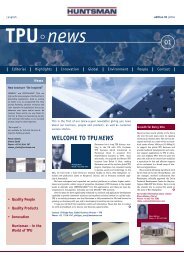We See A Better World
We See A Better World
We See A Better World
You also want an ePaper? Increase the reach of your titles
YUMPU automatically turns print PDFs into web optimized ePapers that Google loves.
Our Baseline<br />
strategic changes in our business<br />
profile over the past few years<br />
have had a significant effect on<br />
the composition of our total energy<br />
and environmental emissions metrics<br />
compared with our previous baseline<br />
of 1998.<br />
Our 2006 baseline energy and environmental<br />
emissions for energy consumption<br />
and greenhouse gas emissions are<br />
nearly half our 1998 original baseline<br />
levels. The revised baseline for our<br />
remaining environmental performance<br />
metrics is not nearly as dramatic, but<br />
nonetheless more accurately reflects<br />
our current company portfolio.<br />
Minor corrections in historic data<br />
may be due to data errors or other<br />
approved reasons. Each year, energy<br />
consumption and environmental emission<br />
estimates are recalculated and<br />
revised for all years in the EHS annual<br />
report, as attempts are made to<br />
improve both the analyses themselves,<br />
through the use of better methods or<br />
data, and the overall usefulness of the<br />
report. Huntsman follows the United<br />
Nations Intergovernmental Panel on<br />
Climate Change (IPCC) Good Practice<br />
Guidance (IPCC 2000), which states,<br />
regarding recalculations of the time<br />
series: “It is good practice to recalculate<br />
historic emissions when methods are<br />
changed or refined, when new source<br />
34 Huntsman 2010 Sustainability Report<br />
categories are included in the inventory,<br />
or when errors in the estimates are<br />
identified and corrected.”<br />
In general, recalculations are made<br />
to the energy and emission estimates<br />
either to incorporate new methodologies<br />
or, most commonly, to update recent<br />
historical data. As a result, figures and<br />
totals depicted in this year’s sustainability<br />
report may include small corrections in<br />
historic emissions as a result of routine<br />
auditing of our data.<br />
As reported in previous EHS annual<br />
reports, we completed the sale of<br />
our low-margin, energy-intensive Base<br />
Chemicals and Polymers operations<br />
near the end of 2007. Much of the<br />
decrease in our 2007 and 2008 energy,<br />
air and greenhouse gas emission<br />
metrics is a direct result of the sale of<br />
these Base Chemicals and Polymers<br />
sites. Conversely, over much the same<br />
time period, we acquired our Textile<br />
Effects business and have expanded<br />
some of our other business operations.<br />
These strategic changes in our business<br />
profile over the past few years<br />
have had a significant effect on the<br />
composition of our total energy and<br />
environmental metrics compared with<br />
our 1998 baseline year. <strong>We</strong> have subtracted<br />
Base Chemicals and Polymers’<br />
annual contribution to our 2006 and<br />
2007 environmental emissions and reset<br />
our baseline using 2006 as our new,<br />
lower level for all of our environmental<br />
performance indicators. Likewise,<br />
our energy and environmental charts<br />
clearly differentiate each business’<br />
relative contribution to our total<br />
emission metrics.<br />
<strong>We</strong> hope this added transparency<br />
better demonstrates our current global<br />
business profile, continued growth<br />
and resulting emissions.


